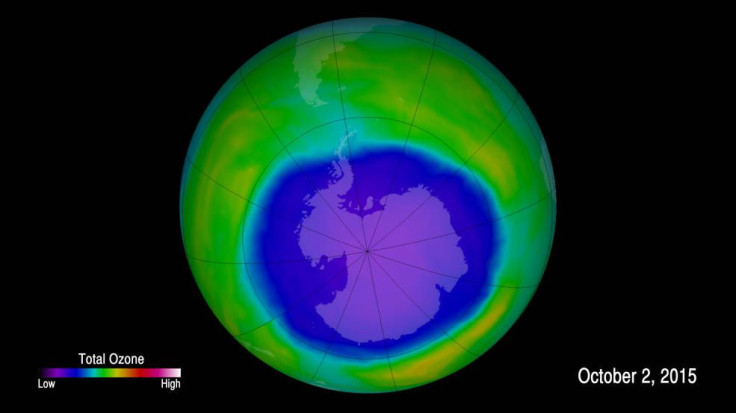NASA Satellites Can Track Ozone Pollution From Space, Agency Says

Estimating ozone pollution from high up in the atmosphere is harder because ozone density increases as we go higher up in the atmosphere, which obscures the measurements of surface ozone.
Navigating this hurdle, a NASA-funded research has devised a way to use satellite data to study the gases which help in the formation of the Ozone Layer and judge pollution levels.
The Ozone Layer helps block harmful ultraviolet radiation from reaching the Earth's surface. When found at low altitudes, ozone gas is responsible for health hazards like asthma and bronchitis.
This layer is formed via complex chemical reactions of two gases with sunlight, high up in the atmosphere. There two gases, volatile organic compounds (VOC) and nitrogen oxides (NOx), were both analyzed in the study to judge ozone pollution.
The study was done using the Dutch-Finnish Ozone Monitoring Instrument aboard NASA's Aura satellite, launched in 2004 and which is capable of monitoring the levels of VOC and NOx in the atmosphere.
"We're using satellite data to analyze the chemistry of ozone from space," said lead author Xiaomeng Jin at the Lamont-Doherty Earth Observatory at Columbia University in Palisades, New York, in a press release by NASA. Their research was published in the Journal of Geophysical Research: Atmospheres.

The team used computer models and space-based observations to study the pollution levels over time. Studying the concentrations of ozone's precursor molecules, the team found that ozone production increases more in the presence of NOx, VOCs, or a mix of the two, for a given location.
The study was focused on North America, Europe and East Asia during the summer months, when abundant sunlight triggers the highest rates of ozone formation. They compared data that was 10 years apart from 2005 and 2015. The team set out to find out whether levels of VOC or NOx limited ozone formation more.
"We are asking, ‘If I could reduce either VOCs or NO x , which one is going to get me the biggest bang for my buck in terms of the amount of ozone that we can prevent from being formed in the lower atmosphere?’" said Arlene Fiore, co-author and atmospheric chemist at Lamont-Doherty, member of NASA's Health and Air Quality Applied Sciences Team that partially funded the study.
The comparative study showed that cities in North America, Europe and East Asia are more often VOC-limited or in a transitional state between VOC and NOx-limited. This means that they either had less VOC or NOx. In addition, the report also added that the 12-year data record of satellite observations show that a location's circumstances can change. This means that either VOC or NOx could affect a given area over time. For example, “in 2005 New York City's ozone production during the warm season was limited by VOCs, but by 2015 it had transitioned to a NOx-limited system due to reduced NOx emissions resulting from controls put into place at both regional and national levels. This transition means that future NOx reductions will likely further decrease ozone production," said Jin.
VOC’s occur naturally, given off by some plants. They are also present in paint fumes, cleaning products, and chemicals. They are also a by-product of burning fossil fuels in factories and automobiles that shoot them into the atmosphere where they hinder ozone development. Similarly, nitrogen oxides also are released into the atmosphere through burning fossil fuels. They are found in cities more than rural areas where industries are lower.
Monitoring ozone pollution from space can add a new dimension to measurements made by air quality management agencies. “The view from space offers consistent coverage of broad areas, and provides data for regions that may not have ground stations,” said the release.
© Copyright IBTimes 2025. All rights reserved.




















